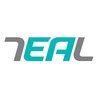Filter interviews by
RMS Interview Questions and Answers
RMS Interview Experiences
2 interviews found
I appeared for an interview in Nov 2023.
(2 Questions)
- Q1. What is non voice
- Ans.
Non voice refers to communication methods that do not involve speaking, such as email, chat, or messaging.
Non voice communication includes written forms like emails, chat messages, and text messages.
It is commonly used in customer service roles where agents interact with customers through chat or email.
Non voice tasks may also involve data entry, research, or administrative work.
Examples of non voice processes include ...
- Q2. Is mapping necessary and why
- Ans.
Mapping is necessary for organizing and visualizing data effectively.
Mapping helps in understanding relationships between different data points
It allows for better decision-making based on spatial analysis
Mapping can help in identifying patterns and trends in data
It is essential for navigation and route planning, especially in logistics and transportation
GIS mapping is crucial for disaster response and emergency manage
(2 Questions)
- Q1. Tell me about yourself
- Q2. Why did you choose these domains
Skills evaluated in this interview
Trainee Interview Questions asked at other Companies
I applied via Naukri.com
Need focus on normal questions
(1 Question)
- Q1. How to make challenges easy
- Ans.
Break down challenges into smaller tasks, seek help when needed, stay organized and focused.
Break down the challenge into smaller, manageable tasks
Seek help from colleagues or supervisors when needed
Stay organized and create a plan to tackle the challenge
Stay focused and avoid getting overwhelmed by the challenge
Take breaks to refresh and reset your mind
Customer Support Executive Interview Questions asked at other Companies
Interview questions from similar companies

I applied via Recruitment Consultant and was interviewed before Apr 2020. There were 4 interview rounds.
Interview Questionnaire
2 Questions
- Q1. Scenario based questions on Python.
- Q2. Automate a travel booking website using python and selenium.
- Ans.
Automating a travel booking website using Python and Selenium involves writing scripts to simulate user actions.
Use Selenium WebDriver to automate browser actions
Identify web elements using locators like ID, class, name, etc.
Use Python libraries like requests and BeautifulSoup for web scraping
Implement test cases to ensure the website functions as expected
Handle exceptions and errors that may occur during automation
Interview Preparation Tips
Skills evaluated in this interview

I applied via Campus Placement and was interviewed before May 2020. There were 3 interview rounds.
Interview Questionnaire
2 Questions
- Q1. Design fan.What is bm? What is nozzle?
- Ans.
BM stands for Blade Material. Nozzle is a device that directs or controls the flow of a fluid.
BM refers to the material used to make the blades of a fan. It can be plastic, metal, or wood.
Nozzle is a component that is used to control the flow of a fluid, such as air or water. It can be found in various devices, such as a garden hose or a spray bottle.
In a fan, the nozzle is the part that directs the air flow in a speci...
- Q2. Design blower for industry
- Ans.
Designing a blower for industrial use requires consideration of factors such as air flow rate, pressure, power consumption, and noise level.
Determine the required air flow rate and pressure for the specific application
Select an appropriate blower type (centrifugal, axial, etc.) based on the requirements
Calculate the power consumption and efficiency of the blower
Consider noise level and implement noise reduction measure...
Interview Preparation Tips

I applied via Naukri.com and was interviewed before Jul 2021. There were 2 interview rounds.

(1 Question)
- Q1. What is your motivation to apply for this position?
Interview Preparation Tips

I applied via Recruitment Consultant and was interviewed in Apr 2021. There were 8 interview rounds.
Interview Questionnaire
1 Question
- Q1. A lot of technical questions on WPF and C#.Net
Interview Preparation Tips

Interview Questionnaire
1 Question
- Q1. Prepare python data structures and python basics

Senior Engineer Interview Questions & Answers
Titan Engineering & Automationposted on 21 Aug 2022

(2 Questions)
- Q1. How many Degree of freedom controlled in fixture?
- Ans.
The number of degrees of freedom controlled in a fixture depends on the type and complexity of the fixture.
A simple fixture may control only one degree of freedom, such as rotation around a single axis.
A more complex fixture may control multiple degrees of freedom, such as rotation around multiple axes and translation in multiple directions.
The number of degrees of freedom controlled in a fixture can also depend on the...
- Q2. 12 Degree Of Freedom.
- Ans.
12 Degree of Freedom refers to the number of independent movements a rigid body can make in 3D space.
A rigid body with 12 degrees of freedom can move in any direction and rotate around any axis.
The 12 degrees of freedom are divided into 6 translational and 6 rotational degrees of freedom.
Examples of systems with 12 degrees of freedom include a spacecraft in orbit or a robot arm with 6 joints.
Interview Preparation Tips

I applied via Naukri.com and was interviewed in May 2024. There were 2 interview rounds.
(2 Questions)
- Q1. Give me your Introduction
- Q2. What is your Job profile
(2 Questions)
- Q1. What is your job profile
- Q2. How you handle the situation
Interview Preparation Tips
- Industrial Automation
- Panels

I applied via Naukri.com and was interviewed before Jul 2023. There were 4 interview rounds.
Genaral awareness, reasoning
(2 Questions)
- Q1. Qualification and Working experience
- Q2. General questions about you
(2 Questions)
- Q1. What is PLC, scope of industrial automation.
- Ans.
PLC stands for Programmable Logic Controller. Industrial automation involves using PLCs to control machinery and processes in manufacturing.
PLCs are specialized computers used to control industrial processes and machinery.
They are programmed using ladder logic or other programming languages to automate tasks.
PLCs can be used in various industries such as manufacturing, automotive, food processing, and more.
Industrial a...
- Q2. Program of conveyor start stop and cascade logic.
- Ans.
Conveyor start stop and cascade logic involves programming the sequence of starting and stopping multiple conveyors in a specific order.
Use PLC programming to control the start and stop sequence of conveyors
Implement interlocking logic to ensure safe operation of conveyors
Utilize sensors to detect the presence of objects on the conveyor for automatic start/stop
Create a cascade logic to ensure smooth transition between ...
(1 Question)
- Q1. Salary negotiation and offer.
Skills evaluated in this interview
RMS Interview FAQs
Tell us how to improve this page.
Interview Questions for Popular Designations
- Senior Executive Interview Questions
- Executive Interview Questions
- Design Engineer Interview Questions
- Senior Associate Interview Questions
- Sales Executive Interview Questions
- Associate Software Engineer Interview Questions
- Senior Software Engineer Interview Questions
- Manager Interview Questions
- Show more
RMS Interview Process
based on 3 interviews
Interview experience
Interview Questions from Similar Companies
|
Risk Analyst
52
salaries
| ₹5 L/yr - ₹8.4 L/yr |
|
Senior Risk Analyst
34
salaries
| ₹5 L/yr - ₹14 L/yr |
|
Lead Analyst
20
salaries
| ₹8.6 L/yr - ₹16.1 L/yr |
|
Data Analyst
19
salaries
| ₹2.4 L/yr - ₹5.3 L/yr |
|
Analyst
19
salaries
| ₹3.4 L/yr - ₹7.4 L/yr |

Schneider Electric

Rockwell Automation

GKN

Titan Engineering & Automation
- Home >
- Interviews >
- RMS Interview Questions




















